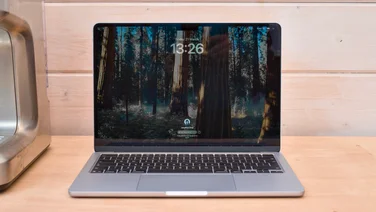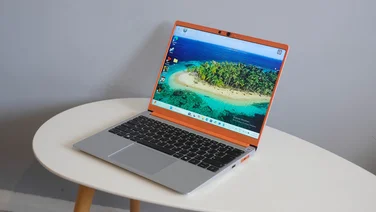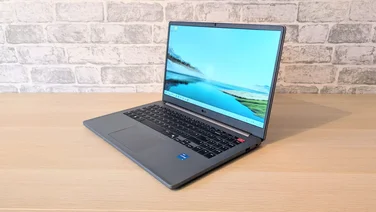To help us provide you with free impartial advice, we may earn a commission if you buy through links on our site. Learn more



Lenovo’s designs have always been more practical and austere than their rivals’, but the IdeaPad U260 takes a different approach. Technology takes a back seat to design, but that’s not to say that the U260 lags far behind: its ultra-low voltage Intel Core i3-380UM may only run at 1.33GHz, but it’s twice as fast as AMD Vision-equipped laptops and far more powerful than Intel’s Atom processors found in netbooks.
Instead of curvy lines and glossy plastic, the U260 opts for a simple yet elegant design, using novel materials to create a luxury feel. It resembles a large, thin book, with the outer case finished in a rubberised matt brown, forming a uniform cover, with few of the grilles and panels you’d find on other laptops. While this looks elegant, it means you can’t access the battery, hard disk or memory without removing the entire lower panel.

Opening the screen reveals a leatherette keyboard panel and a glass touchpad. This has a matt finish and is smooth and responsive, and its two large buttons are placed conveniently on the edge of the case, where your thumb naturally rests, and have a light action. The keyboard panel is firm, and the keys have a comfortable shape, and a light, crisp action. Our only complaint is that the keys are a bit small, but we found it comfortable enough to type on.
The U260 has a unique 12.5in screen, but its 1,366×768 resolution is standard enough. It’s an interesting size, and we appreciated the extra space compared to 11.6in screens. Its LED backlight is even, but a tight vertical viewing angle meant that our plain white test screen appeared banded. The anti-glare screen dulls colours slightly and adds a slight sheen, and there’s a strong blue cast that makes flesh tones a little lifeless.
While the U260’s svelte design, along with its 1.4kg weight, make it ideal for carrying around with you, its battery life of under six hours in our light usage is a little disappointing. It’s a testament to the advances in laptop mobility that we now consider this a low score, but it’s still more than adequate for most journeys.

Benchmarks don’t tell the full story, however, and despite getting an overall score of 26, the U260 felt much snappier thanks to its 128GB SSD hard disk. The low-power i3-380UM has two physical cores, with Hyper-Threading inflating this to four, but doesn’t support Turbo Boost, so there’s not such a great difference between performance in single- and multi-threaded applications.
There’s no dedicated graphics chip, and the Core i3’s integrated graphics processor isn’t up to playing games, managing only 7.4fps in Call of Duty 4. It can decode HD video however, and you can output both video and audio via HDMI if you want to watch films on a larger screen or plug into an AV amp. The internal speakers aren’t up to reproducing music or soundtracks, although their brash sound will suffice for voice applications.

Limited space means there’s no optical drive, as you’d expect from an ultra-portable, and only two USB ports. We were slightly disappointed that neither of these was a faster USB3 port, and neither supports Sleep and Charge either.
We fell in love with the U260 as soon as we saw it, but having spent some time with it, it’s apparent that technology has taken a back seat to design. That’s not to say the U260 isn’t perfectly functional – it just doesn’t offer as much as other laptops here, such as the excellent Asus U31JG. It does look beautiful though, and we’d certainly understand if your heart won out over your head.






